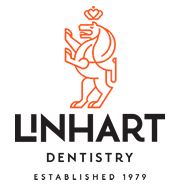Recently there was a long cover article in the New York Times regarding the overuse of Conebeam CT scans in dentistry. This article brought up some of the negatives of these types of scans, primarily the amount of radiation associated with them. However, there are uses for these machines in dentistry, and when used appropriately, they provide diagnostic and planning information that cannot otherwise be obtained.
Radiation
The average digital panoramic radiograph in a dental office exposes the patient to about 8-15 μSieverts (μS) of radiation < a dental conebeam CT is anywhere from 10-100 μS, depending on the size of the scan area and location < a cross-America flight exposes a person to ~60 μS < a medical CT ~2000 μS < annual background radiation ~2500μS. Therefore, the amount of radiation actually received by patients during a conebeam CT scan is minimal when compared to the amount of background radiation a person gets in a year, ~50/2500 μS = 2%.
Pros
Conebeam CT scans give 3-dimensional images of hard structures in the head and neck region. That means they can let you see every aspect of the jaw, teeth, joint, skull, etc. You can see the distance of structures from one another, and the location of abnormalities. In dentistry, these scans are particularly useful in Implant dentistry. A conventional dental x-ray, whether a periapical (small) film or a panoramic (large) film, only give the dentist a 2-D picture of a structure. However in order to place an implant in the best location in bone, sometimes the third dimension is required in order to avoid missing the bone, hitting nerves, or severing arteries. Conebeam scans also are useful in endodontics (root canal therapy), orthodontics (tooth movement), and of course general dentistry. 3D images which allow cross-sectional viewing in dentistry are extremely useful tools that will allow dentists to be more precise in their procedures.
Cons
The only true con of these machines is the radiation. As discussed above, there is a significant dose delivered, however it is minimal in comparison to other medical scans and even normal activities like flying. The primary concern demonstrated in the NYT article about conebeams is their overuse. While these devices do have a great role, they should be used only when necessary. Not all implants require scans, most orthodontics and endodontics do not require them either. Therefore it is extremely important for dentists to properly diagnose when a conebeam CT is necessary for a patient.
Kodak 9000 3D Conebeam CT
Dr. Jan Linhart is proud to announce that he has recently added the Kodak 9000 3D Conebeam CT to his office. We chose the Kodak machine because it allows us to take a scan of a small area, thus giving it the lowest patient radiation dose of any conebeam on the market. In addition, the Kodak unit allows us to take independent digital panoramic x-rays without delivering the radiation dose of a conebeam. This is a unique feature that many other machines lack.
Dr. Linhart, as well as the specialists in our office including Dr. Roger Bronstein (periodontist), have been trained to identify exactly when a conebeam CT is necessary, and will only take scans when indicated! We encourage you to contact us with any questions or comments regarding this new addition to our office. I can be reached directly at Zachary@drlinhart.com
